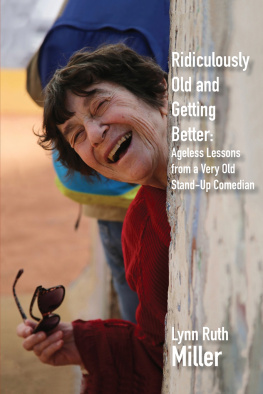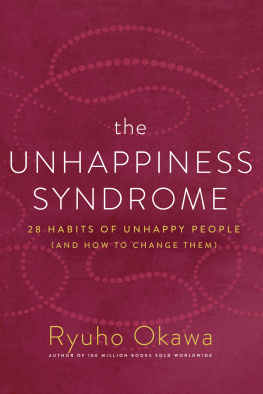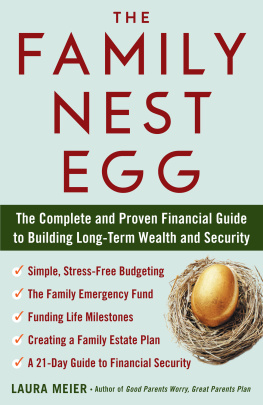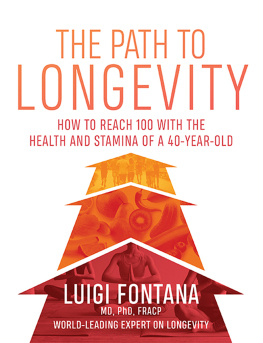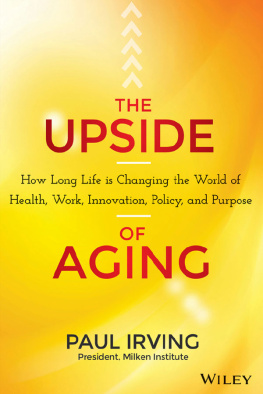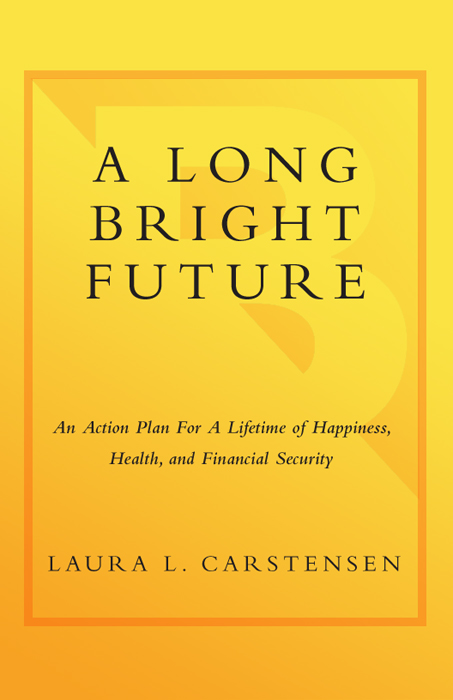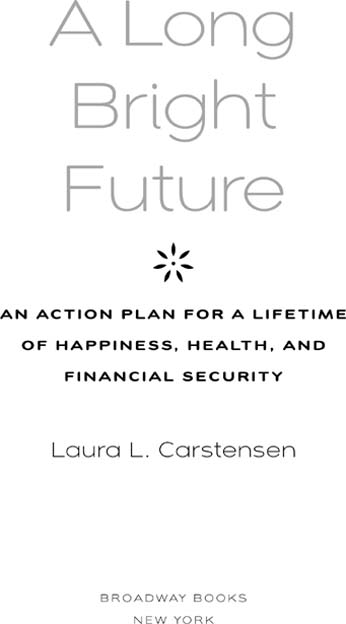This book is dedicated to my parents, Pam and Edwin Carstensen, for their unfailing love and support and for engendering in all five of their children the freedom to ask, What if?
to Richard Rainwater for his vision and support that created the Stanford Center on Longevity
ACKNOWLEDGMENTS
In many ways, this book is a product of the culture that is Stanford University. The universitys long-standing dedication to public good and its close ties to Silicon Valley create a culture rife with the spirit of possibility. I cannot imagine a better home for the Stanford Center on Longevity. The Center is built around the brainpower represented among its affiliated faculty and students and is staffed by extraordinary people who come to the Center with expertise in politics, business, demography, and entrepreneurship, along with a commitment to build a world that supports long life. My perspective on longevity is the product of living and working in this very special place.
While I alone take full responsibility for any mistakes made in this book, much credit for what is right goes to my Stanford colleagues. I am grateful to Professors Tom Rando, Alan Garber, Victor Fuchs, Tom Andriacchi, John Shoven, Mary Goldstein, Dan Kessler, and each and every one of my colleagues in the Psychology Department. Professors Lee Ross and Jeanne Tsai repeatedly challenged my thinking in ways that only ones dearest friends are able to do. So many conversations with colleagues at other universities across the country and around the globe also affected my thinking, corrected my misunderstandings, and offered me new insights. Scores of those conversations occurred in the home of the late Margret and Paul Baltes, both distinguished pioneering gerontologists and life-span psychologists, and some version of those conversations continue today with Professors Ulman Lindenberger, director of the Max Planck Institute for Human Development in Berlin; and Ursula Staudinger, academic dean and vice president at the Jacobs University Bremen; and in many other contexts across Europe. Other turning points came from conversations with Dan Blazer, Duke University; Fredda Blanchard-Fields, Georgia Tech University; and Susan Charles, University of California. Duncan Moore, professor of optical engineering, has been a partner and friend of the Center since its inception. I learn from my colleagues in the MacArthur Foundation Network on Aging Societies, inspired by and guided by Jack Rowe, every time I see them. I thank Richard Suzman, director of the Behavioral and Social Research Program at the National Institute on Aging, for forcing a sustained and productive dialogue across disparate fields of study, which is the only way that we will solve practical challenges of aging societies. I am also thankful for the support and hospitality of the American Academy in Berlin and the Guggenheim Foundation.
Since the Stanford Center on Longevity was founded, the walls that surrounded my academic life began to fall. Who could have imagined that Jane Hickie, after working for decades with former governor of Texas Ann Richards, would have decided to join the Center? I will always be indebted to Jane, not only for seeing the big picture and envisioning alternatives, but for her uncanny understanding of the steps necessary to traverse from one world to another. The Center brought to Stanford Adele Hayutin, whose grasp of global demographics and its implications for us all are unmatched, as is her ability to craft images that convey what even a thousand words cannot.
My students inspire me daily. Especially those graduate students, post-doctoral fellows, and undergraduates who have worked in my laboratory. Candice Lowdermilk and Charlotte Lai kept my lab on track during the writing of this book. Greg Samanez-Larkin, Cara Rice, Helene Fung, and Hal Ersner-Hershfield made numerous contributions. The entering Stanford freshmen I taught with my graduate student Ninna Notthoff in 2008 joined me in thinking outside of the box. And I thank my assistant, Jill Chinen. I honestly think that my productivity would be halved easily were it not for her. She, Lauren Smith, and Tracy Dow anticipate and solve problemsmany times before I see them.
I thank my friends who are writers: Randy Bean, Doug Foster, and Susan Krieger; their tutelage over the years has been a great gift. My thanks also go to Joan Hamilton for her assistance drafting a prospectus that initially caught the attention of my agent, Esther Newberg, and my editor, Phyllis Grann, both of whom have been wonderfully responsive and helpful every step of the way. I am especially grateful to Kara Platoni, who was my writing partner throughout this project. Her talents, intelligence, persistent questioning, and gift with words were instrumental in crafting this book.
Just as this book reflects the many resources at Stanford, it reflects the love, support, intelligence, and basic good sense of my family. I know first-hand the value of families that span generations. My grandmother Opal Carstensen showed me at a young age that friendship really can penetrate generations and my great-aunt Mabel extended that same special friendship to me at pivotal times once I was grown. We should all hope to have my great-aunt Nells wit and good sense at 100or at any other age.
It would be impossible to overstate my fathers intellectual contributions to this book. I often tell my colleagues that I have an unfair advantage, a distinguished scientist for a father who will read anything I send him and return it with comments pretty much always within twenty-four hours. He seemingly knows everything and his critical thinking and clarity have shaped many of my ideas about longevity. He is a person I can only aspire to emulate.
When my siblings and I were children, my mother and father taught us to take our work very seriously and ourselves not so much. My parents raised Richard, Allen, Dee, Tina, and me with a good deal of laughter and one admonition: do the very best we could at whatever profession we chose. A naturalist, a craftsman, a musician, and an educator, my siblings are among the most interesting people I know. My son, David Pagano, and his wife, Jennifer, influenced this book directly and indirectly in countless ways, and with my remarkable grandchildren, Evan and Jane, carry on a tradition of love and dedication to family.
My husband, Ian Gotlib, who is also my colleague, was most personally affected by my writing of this book. Anyone who has ever lived with someone writing a book knows that it can be difficult. Through it all, Ian never once complained. Not only that, he read every word of the manuscript, some parts countless times, and listened to my ideas and each time made them better. Thank you, Ian, for living your life with me.
Introduction
Y ou could grow old in a bookstore searching for a good book about aging.
Really, there seem to be only three kinds of them out there, and believe me, Ive looked. There are those that prophesy economic doom as the baby boomer generation reaches retirement, there are those that urge you to look forward, through rose-tinted glasses, to a time of wisdom and saging, and there are those that try to convince you that with proper diet and exercise, you dont have to grow old at all.
This isnt one of those books. Instead, its an approach to a uniquely twenty-first-century question: what are we going to do with supersized lives? The twentieth century made us a fabulous gift with no strings attached: a third part of life, another thirty years on average. Thats what we need to begin talking about now.


